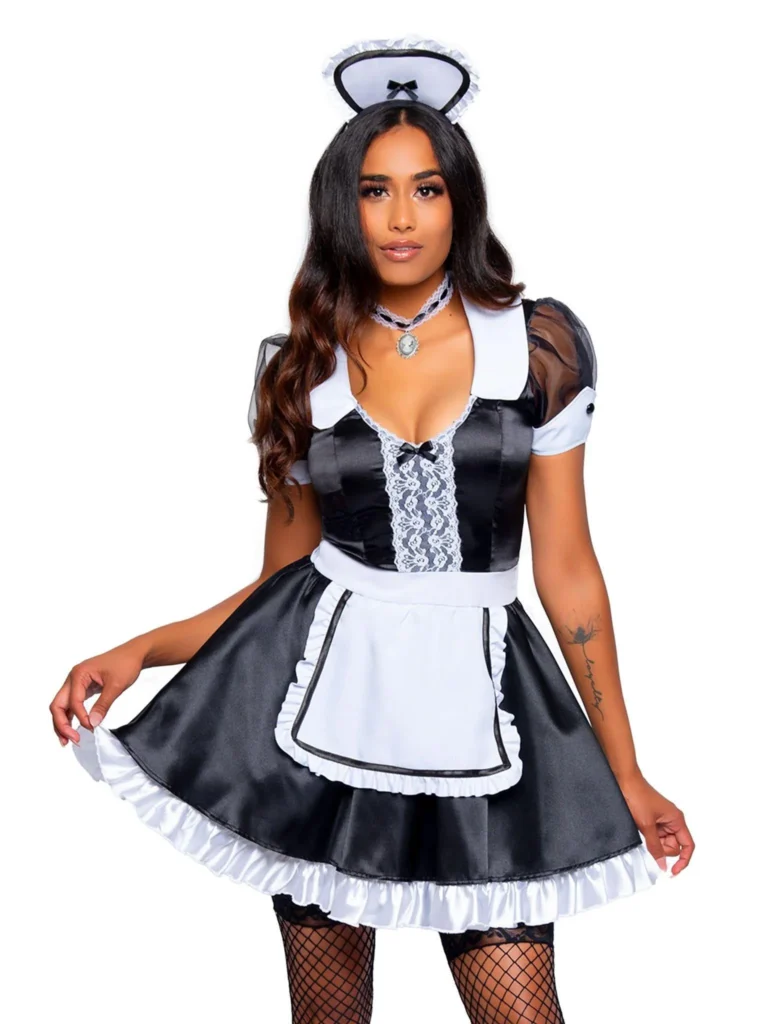A French maid is often recognized today as a costume associated with popular culture and themed parties, but its origins are rooted in real historical roles within upper-class European households. This post dives deep into the history, evolution, and modern-day interpretations of the French maid, separating fact from fiction and examining its cultural significance.
1. The Historical Origins of the French Maid:
The concept of the French maid dates back to the 19th century, when French women were employed as domestic servants, particularly by British and American aristocrats. Known for their polished appearance and refined manners, these maids were often perceived as stylish and efficient. The term “French maid” became synonymous with elegance and attention to detail.
Unlike their modern depictions, real French maids were responsible for practical tasks such as cleaning, dressing their employers, and managing household needs. They wore modest uniforms that signified their position in the domestic hierarchy.
2. Evolution of the French Maid Costume:
The modern French maid costume as we know it—a short black dress with white frills, lace trim, and sometimes fishnet stockings—emerged in the 20th century, particularly in theater and burlesque performances. This stylized version bears little resemblance to the traditional attire of actual maids.
This evolution was influenced by the rise of costume parties, Halloween trends, and pop culture. Over time, the French maid costume became a symbol of flirtation and fantasy, commonly used in entertainment, cosplay, and themed events.
3. French Maid in Pop Culture:
The French maid has become a staple character in films, sitcoms, and stage performances. From comedic roles to romantic escapades, the maid character is often portrayed with a mix of charm and mischief. Iconic representations in movies and television helped solidify the image of the French maid as both a visual and thematic trope.
In music videos and fashion campaigns, the French maid costume has made recurring appearances, representing sensuality, elegance, or even parody. However, these portrayals are often exaggerated and far removed from the historical context.
4. Why the French Maid Remains Iconic Today:
The French maid continues to capture attention because it merges elegance with allure. The aesthetic—black and white contrast, fitted attire, and classic accessories—embodies a timeless appeal. For costume designers and fashion enthusiasts, it offers room for creativity and personalization.
Moreover, the costume’s association with theatricality and role-play makes it a frequent choice for events that require playful or themed attire. The visual identity of the French maid, complete with feather duster and apron, is instantly recognizable and widely understood across cultures.
5. Modern Uses: Fashion, Cosplay, and Events:
Today, the French maid costume is popular in:
-
Cosplay conventions: Fans recreate detailed versions for character play.
-
Themed parties: From Halloween to masquerade balls.
-
Photo shoots and modeling: Often used in stylized or vintage-inspired shoots.
-
Stage and performance art: Seen in burlesque, cabaret, and theatrical acts.
Each setting gives a new meaning to the outfit. Some opt for humor, others for nostalgia, and many for its stylish allure. US Weekly: Behind the Buzz of Celebrity News & Pop Culture Trends
6. Cultural Controversies and Misconceptions:
While the French maid is adored in fashion and costume design, it also faces criticism. Some argue that modern portrayals can reinforce stereotypes or diminish the value of domestic work. Others feel it oversimplifies a real historical role into a caricature.
As with any cultural icon, it’s important to understand the context and respect its origins. While the costume may be playful, it’s crucial to avoid promoting outdated gender roles or diminishing the dignity of real domestic workers.
7. French Maid Costumes: What to Look for:
If you’re shopping for a French maid costume, consider the following:
-
Fabric quality: Look for breathable, comfortable materials.
-
Length and fit: Choose based on your comfort level and the event’s tone.
-
Accessories: Add aprons, headpieces, feather dusters, and stockings for authenticity.
-
Theme matching: Align the costume’s style with the event (e.g., classic, modern, sexy, vintage).
Pro tip: Always read reviews and size charts carefully, especially when purchasing online.
8. French Maid: A Feminine Archetype:
In literature and media, the French maid often embodies a unique archetype—feminine, clever, sometimes mischievous, and always presentable. She may be a side character or a central figure, but she usually brings intrigue and charm wherever she appears.
This archetype has inspired countless artists, writers, and costume designers to explore themes of femininity, class, and societal roles.
9. Tips for Styling a French Maid Look:
For those interested in styling themselves as a French maid, here are some creative ideas:
-
Classic Chic: Stick to the black and white palette, and keep accessories minimal.
-
Modern Twist: Add bold makeup, heels, or even tech-inspired props.
-
Vintage Vibe: Use lace, gloves, and retro hairstyles to channel old-world glam.
-
DIY Option: Create your own costume from thrift finds and handmade details.
Whether you’re dressing up for fun, fashion, or performance, the goal is to stay comfortable and confident.
10. Respecting the History Behind the Costume:
It’s easy to get caught up in the visuals, but it’s worth remembering that the French maid represents more than just a costume. The women who originally held these roles were hardworking individuals navigating complex social structures. Their stories deserve recognition and respect.
Learning about their experiences adds depth and context to the modern portrayal—and can enhance your appreciation of the look and its evolution.
FAQs:
Q: Were French maids real domestic workers?
Yes, they originated in the 19th century and worked in affluent households, often known for their refined etiquette and presentation.
Q: Why is the French maid costume considered sexy today?
The modern interpretation evolved through burlesque and pop culture, stylizing the original uniform for theatrical and fantasy-based purposes.
Q: Can I wear a French maid costume respectfully?
Absolutely—just be mindful of the context, the audience, and the historical background the look stems from.
Conclusion:
The French maid is more than a playful costume—it’s a cultural figure that’s been reimagined over time. From its dignified roots in European domestic service to its modern portrayal in costume culture and media, the French maid remains a symbol of grace, style, and storytelling.



